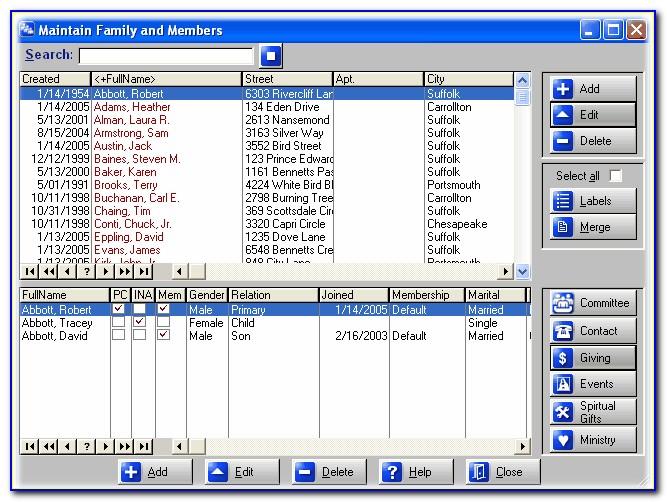


For example, you could call a tab with HR budget data ‘hr_budget_2019’.Ĭlear and descriptive filenames help people find files and understand their content. Give your spreadsheet tabs unique names to provide context on the information each tab contains. Read the guidance on sharing or collaborating with government documents.
MICROSOFT EXCEL TEMPLATE DATABASE SOFTWARE
Most spreadsheet software allows you to save or export as an ODS file. The open file format for spreadsheets is Open Document Spreadsheet (ODS). For example, when responding to requests for information under the Freedom of Information Act (FOIA) or General Data Protection Act (GDPR) you might need to provide data in a reusable, machine-readable format. Open data formats can also make it easier for your organisation to meet legal or compliance obligations. Using an open format for your spreadsheet makes it easier for people to use with different tools. Open file formats are standardised file types not specific to one particular software package. If the spreadsheet tool cannot display all the data in the file, this can result in lost or missing information, which can distort statistics and conclusions. If you need to share your spreadsheet with people using earlier versions of Excel, Microsoft has guidance on making your file backwards compatible.

Microsoft has information about Excel specifications and limits. Check the specifications of your software, particularly around row and column limits, to make sure you are using an appropriate tool.įor example, older versions of Microsoft Excel (97-2003) have a row limit of around 65,000 rows. Spreadsheet tools and software have different capabilities and limitations for handling data.

publisher, for example your name or departmentįor more information on using metadata in your spreadsheet, read the guidance about recording information about data sets you share with others.Your cover page should include information such as the: A cover page is also useful to keep metadata and maintenance information in one place. This is particularly important for large or complex spreadsheets. Use a cover pageĪdding a cover page to your spreadsheet helps users understand its purpose and content. In these cases, it might be more appropriate to publish your data as a CSV file. These users typically need data in machine-readable formats which they can use with programming tools with minimal data manipulation. However, spreadsheets might not be suitable for technical users who want to perform detailed analysis on the information or combine it with other data. In most cases, a spreadsheet is a suitable format for these users. For example, you might publish a template form for users to complete and return so they can claim back expenses. General users might view the information for reference only, or they might need the spreadsheet to record or submit information following specific requirements. When sharing or publishing data, consider who needs access and how they will use the information. If you are sharing or publishing your spreadsheet, follow this guidance to make your file easy to find, use, and to minimise risk for your organisation. If your spreadsheet is for personal use, you should still follow best practice as spreadsheets often end up serving a wider audience. If you plan to publish or share statistics content, you should follow the Government Statistical Service (GSS) guidance on releasing statistics in spreadsheets.


 0 kommentar(er)
0 kommentar(er)
